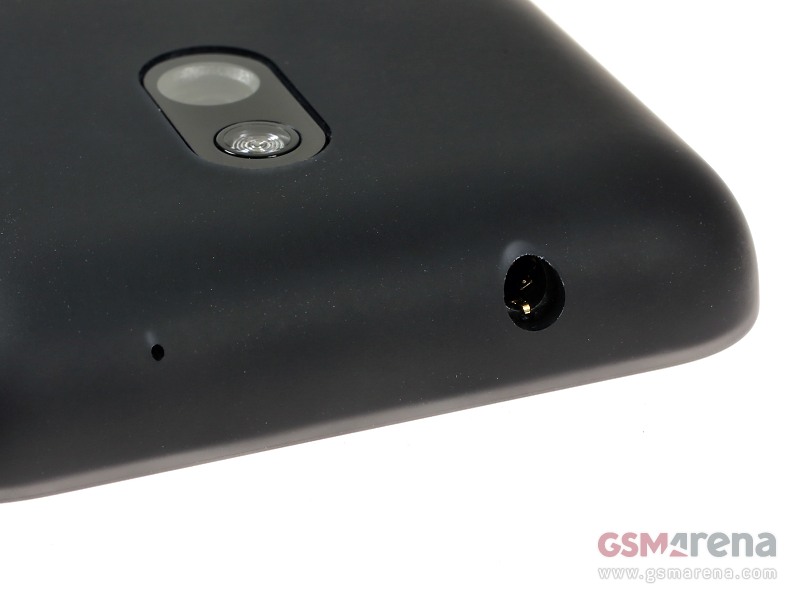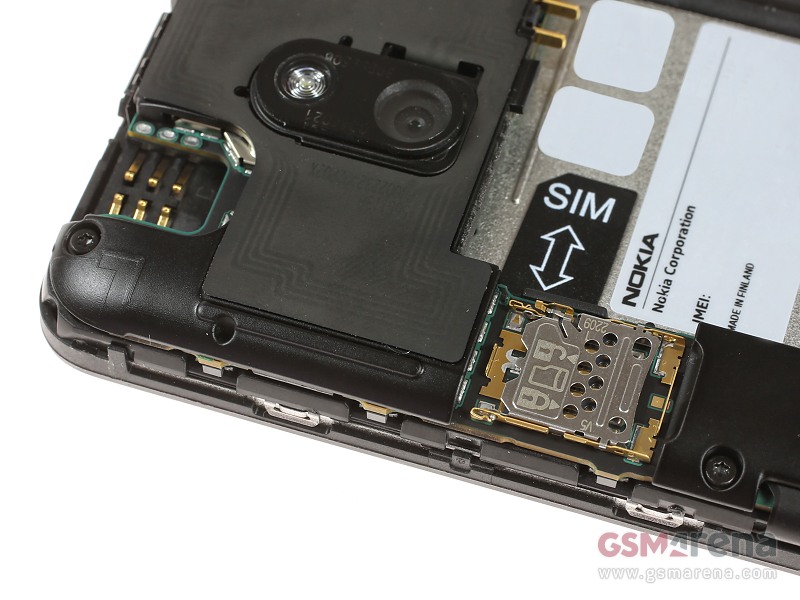
Network Technology and Connectivity
The Nokia Lumia 620 was engineered to support GSM and HSPA networks, which were standard at the time of its release in 2013. The device is compatible with various 2G bands (GSM 850/900/1800/1900) and 3G bands (HSDPA 850/900/1900/2100), offering users a seamless connectivity experience. With its HSPA capability, Lumia 620 provides download speeds up to 21.1 Mbps and upload speeds up to 5.76 Mbps, ensuring quick browsing and efficient data usage over these networks.
Launch, Availability, and Discontinuation
Announced in December 2012 and released in January 2013, the Nokia Lumia 620 represented Nokia's continued effort to capture market share in the burgeoning smartphone sector. Despite its advanced features and a competitive price point of approximately 120 EUR, the device was eventually discontinued, as Nokia moved towards more advanced models and technology partners.
Body and Build
The Lumia 620 showcases dimensions of 115.4 x 61.1 x 11 mm and a weight of 127 grams, making it both lightweight and compact—key features emphasized by Nokia during the design phase. Employing a Micro-SIM slot, the device caters well to typical usage, with a comfortable feel thanks to its contoured sides and vibrant color options including lime green, orange, magenta, yellow, cyan, white, and black, contributing to its distinctive aesthetic appeal.
Display Specifications
A TFT screen provides a splash of vivid colors and clarity, measuring 3.8 inches and a screen-to-body ratio of about 58.3%. The display resolution of 480 x 800 pixels (5:3 ratio, ~246 ppi density) ensures text and images render clearly, and with good color accuracy under direct sunlight, backed by a nominal contrast ratio of 1068:1 that transitions to 2.142:1 in sunlight conditions.
Operating System and Performance
Powering the Lumia is Microsoft Windows Phone 8, upgradable to 8.1, facilitating a user-friendly interface. The Qualcomm Snapdragon S4 chipset, alongside a dual-core 1.0 GHz Krait CPU and Adreno 305 GPU, ensures processing tasks are handled efficiently, with basic multi-tasking capabilities supported by 512MB of RAM. Its configuration makes it competent for daily tasks such as browsing, social media, and light gaming.
Memory and Storage
Internally, the Lumia 620 offers 8GB of storage, allowing users to store essential apps and files. When users require additional space, the device accommodates microSDXC cards via a dedicated slot, facilitating significantly more storage as necessary.
Camera Capabilities
Equipped with a 5 MP rear camera featuring autofocus and LED flash, the Lumia 620 enables users to capture clear pictures and record video at 720p@30fps. The device also includes a VGA front camera, suitable for basic selfies and video calls. Its photography capabilities are satisfactory for the time, adequate for casual photography needs.
Sound and Audio Features
The Lumia 620 integrates a loudspeaker and a 3.5mm headphone jack, allowing flexibility in audio consumption. The loudspeaker offers decent voice and ring sound levels measured at 71dB/66dB (noise)/78dB (ring), and overall audio quality—with noise at -79.8dB and crosstalk at -75.8dB—aligns with user expectations of the hardware era.
Communications and Sensors
Wireless communication on the Lumia 620 includes dual-band Wi-Fi 802.11 a/b/g/n, Bluetooth 4.0 with A2DP and EDR, and after WP8 Denim update, aptX support. Positioning systems like GPS and GLONASS are incorporated for navigation, and NFC technology is onboard for wireless transactions and data sharing. On the sensor front, the device features an accelerometer, proximity sensors, and a compass, enhancing its functionality.
Battery Life and Management
Powered by a removable Li-Ion 1300 mAh battery (BL-4J), the Lumia 620 delivers a standby time of up to 330 hours, talk time up to 14 hours 40 minutes on 2G networks, and up to 9 hours 50 minutes on 3G networks. With an endurance rating of 36 hours, users can expect reliable battery life for regular use, complemented by music play capacity of up to 61 hours.
Additional Features and User Experience
Beyond hardware specifications, Nokia aimed to deliver a solid user experience with the Lumia 620 by focusing on ease of use and integration with Microsoft services. As part of Nokia's Lumia line, it was designed to provide users a seamless interface with familiar applications such as Microsoft Office and Xbox services. Despite being discontinued, its design, reliable battery life, and balance of features ensure it remains a memorable part of Nokia's history in smartphones.
Main Features of Nokia Lumia 620
- Network Technology: GSM / HSPA
- Compact Design with Dimensions: 115.4 x 61.1 x 11 mm
- Lightweight: 127 g
- 3.8-inch TFT Display
- Resolution: 480 x 800 pixels (~246 ppi density)
- Upgradable OS: Microsoft Windows Phone 8 to 8.1
- Chipset: Qualcomm Snapdragon S4
- Dual-core 1.0 GHz Krait CPU
- Adreno 305 GPU
- Expandable Storage: microSDXC (dedicated slot)
- Internal Memory: 8GB with 512MB RAM
- Main Camera: 5 MP, AF with LED flash
- Video Recording: 720p@30fps
- Selfie Camera: VGA
- Wi-Fi Connectivity: dual-band a/b/g/n
- Bluetooth 4.0 with A2DP, EDR, LE
- Positioning: GPS, GLONASS
- NFC Support
- Standard 3.5mm audio jack
- Battery: Removable Li-Ion 1300 mAh
- Variety of Color Options: Lime green, orange, magenta, yellow, cyan, white, black
Disadvantages of Nokia Lumia 620
- Discontinued status limits availability and support.
- Low-resolution VGA selfie camera.
- Limited internal storage of 8GB, though expandable.
- Only 512MB of RAM which may affect multitasking performance.
- No radio feature included.
- Small battery capacity of 1300 mAh, leading to average battery life.
- Older Windows Phone 8 OS, with limited upgradeability beyond 8.1.
- Using TFT display, which lacks the vividness and energy efficiency of modern technologies like OLED.
- Low screen-to-body ratio of approximately 58.3%.








































View Also
More Phones
All Rights Reserved +14266 Phones © Mobilawy 2025

























